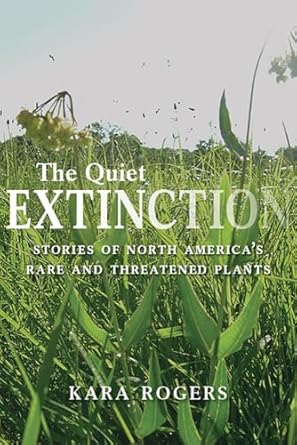
Enjoy fast, free delivery, exclusive deals, and award-winning movies & TV shows with Prime
Try Prime
and start saving today with fast, free delivery
Amazon Prime includes:
Fast, FREE Delivery is available to Prime members. To join, select "Try Amazon Prime and start saving today with Fast, FREE Delivery" below the Add to Cart button.
Amazon Prime members enjoy:- Cardmembers earn 5% Back at Amazon.com with a Prime Credit Card.
- Unlimited Free Two-Day Delivery
- Streaming of thousands of movies and TV shows with limited ads on Prime Video.
- A Kindle book to borrow for free each month - with no due dates
- Listen to over 2 million songs and hundreds of playlists
- Unlimited photo storage with anywhere access
Important: Your credit card will NOT be charged when you start your free trial or if you cancel during the trial period. If you're happy with Amazon Prime, do nothing. At the end of the free trial, your membership will automatically upgrade to a monthly membership.
Buy new:
$24.95$24.95
Ships from: Amazon.com Sold by: Amazon.com
Buy used: $8.23





Download the free Kindle app and start reading Kindle books instantly on your smartphone, tablet, or computer - no Kindle device required.
Read instantly on your browser with Kindle for Web.
Using your mobile phone camera - scan the code below and download the Kindle app.

The Quiet Extinction: Stories of North America’s Rare and Threatened Plants Paperback – October 22, 2015
Purchase options and add-ons
In the United States and Canada, thousands of species of native plants are edging toward the brink of extinction, and they are doing so quietly. They are slipping away inconspicuously from settings as diverse as backyards and protected lands. The factors that have contributed to their disappearance are varied and complex, but the consequences of their loss are immeasurable.
With extensive histories of a cast of familiar and rare North American plants, The Quiet Extinction explores the reasons why many of our native plants are disappearing. Curious minds will find a desperate struggle for existence waged by these plants and discover the great environmental impacts that could come if the struggle continues.
Kara Rogers relates the stories of some of North America’s most inspiring rare and threatened plants. She explores, as never before, their significance to the continent’s natural heritage, capturing the excitement of their discovery, the tragedy that has come to define their existence, and the remarkable efforts underway to save them. Accompanied by illustrations created by the author and packed with absorbing detail, The Quiet Extinction offers a compelling and refreshing perspective of rare and threatened plants and their relationship with the land and its people.
- Print length248 pages
- LanguageEnglish
- PublisherUniversity of Arizona Press
- Publication dateOctober 22, 2015
- Dimensions6 x 0.6 x 9 inches
- ISBN-100816531064
- ISBN-13978-0816531066
The Amazon Book Review
Book recommendations, author interviews, editors' picks, and more. Read it now.
Editorial Reviews
Review
“The Quiet Extinction is a cogent call to action to conserve native plants, those often overlooked beings that support our lives and weave the living web which makes this green planet home to us all.”—Story Circle Book Reviews
“Worth a read.”—Quarterly Review of Biology
“Kara Rogers has a flair for telling a good yarn, one that is interesting and based on thorough research. Readers will come away with new knowledge and a better understanding of ecology….and hopefully a better appreciation for landscape!”—Gail E. Wagner, contributor to People and Plants in Ancient Eastern North America
“This detailed and authoritative exploration of the causes of plant extinction and its consequences for the intricate web of life binding us and nature together offers a compelling account of the largely unheeded erosion of our priceless natural heritage and what can be done to reverse the damage.”—Stephen Blackmore, Queen’s Botanist and Honorary Fellow of the Royal Botanic Garden Edinburgh
“This beautifully written book brings to life the stories of some of the estimated 3,500 declining or rare species of seed plants in the United States and Canada, telling their stories accurately and often in memorable prose. A patient and persuasive call to arms, it should help to energize plant conservation throughout the region. Highly recommended.”—Peter H. Raven, President Emeritus, Missouri Botanical Garden, St. Louis, MO
About the Author
Kara Rogers has edited more than twenty books on topics in biomedicine and life sciences. She is the author of Out of Nature: Why Drugs from Plants Matter to the Future of Humanity and is a member of the National Association of Science Writers. She is the senior editor of biomedical sciences at Encyclopædia Britannica.
Product details
- Publisher : University of Arizona Press; 2nd ed. edition (October 22, 2015)
- Language : English
- Paperback : 248 pages
- ISBN-10 : 0816531064
- ISBN-13 : 978-0816531066
- Item Weight : 12.2 ounces
- Dimensions : 6 x 0.6 x 9 inches
- Best Sellers Rank: #4,377,401 in Books (See Top 100 in Books)
- #4,530 in Botany (Books)
- #8,474 in Ecology (Books)
- #15,925 in Nature Conservation
- Customer Reviews:
About the author

Discover more of the author’s books, see similar authors, read author blogs and more
Customer reviews
Customer Reviews, including Product Star Ratings help customers to learn more about the product and decide whether it is the right product for them.
To calculate the overall star rating and percentage breakdown by star, we don’t use a simple average. Instead, our system considers things like how recent a review is and if the reviewer bought the item on Amazon. It also analyzed reviews to verify trustworthiness.
Learn more how customers reviews work on Amazon-
Top reviews
Top reviews from the United States
There was a problem filtering reviews right now. Please try again later.
Rogers profiles over two dozen of these disappearing species, from big obvious ones—whitebark pines, sentinels of upper treeline throughout much of the Rocky Mountains; and Fraser fir, the classic farmed Christmas tree of the eastern US, now vanishing in the wild—to the obscure, including Fickeisen plains cactus and parachute penstemon, two diminutive wildflowers perfectly adapted to thrive in challenging cold-desert environments of the arid West.
She elucidates each plant's life, its habits, key relationships with other species, range, and how that plant intersects with human culture and economies. Each chapter is like a scientific detective story, summarizing the findings of many experts, chock-full of fascinating and vivid details, and laying out compelling reasons for saving each of these unique species.
An example: whitebark pine, with its heavy, fat-rich nuts that are dispersed far from the parent trees to establish new stands by Canada Jays, whose pointed beaks (perfect for prying apart cone scales to get the nuts) are so long that "William Clark, who saw the bird in 1805 during his expedition with Meriwether Lewis to the Pacific, mistakenly concluded the animal to be a kind of woodpecker." The jays stash dozens of the pine nuts in a pouch below their tongue, and cache thousands of them for winter food. Uneaten nuts sprout new whitebark pine trees, which also act as windbreaks that accumulate the snowpacks providing water for the region's streams and rivers on which millions of people depend. With whitebarks dying en masse due to the stress of warming climates and a deadly fungus, western forests and watersheds are in big trouble.
Or Fickeisen plains cactus, not discovered until sometime in the 1950s, growing on extremely inhospitable environments of the Colorado Plateau where rain may not fall for months. After blooming in spring and producing a flower almost as big as the 1.5- to two-inch-tall plant, the tiny cacti survives months—or even years—by "retract[ing] into the soil, either pulling themselves completely beneath the ground or sinking in until the crown is even with the soil surface." Think of what this diminutive cactus' drought-survival technology could teach us about adapting as climates change.
When these species disappear, writes Rogers, "the value of what we stand to lose ecologically, culturally, and economically ... becomes immeasurable."
This thoughtfully researched book is illustrated with a sprinkling of Rogers' drawings, which bring the plants alive in a way that words cannot. I only wish there had been more drawings to enhance Rogers' text.
The Quiet Extinction is a cogent call to action to conserve native plants, those often overlooked beings that support our lives and weave the living web which makes this green planet home to us all.
by Susan J. Tweit
for Story Circle Book Reviews
reviewing books by, for, and about women
Chapters include a considerable variety, from Mead's milkweed to the Feikeisen and acuna cactus to the Whitebark pine. Each has been chosen as an example and taken together, give a reader a sense of the problems and a sense of how they are being addressed. As a Floridian, I found the chapter on Florida Torreya to be especially interesting; this tree is rare and native to the slope ecosystem along the Apalachicola river in Florida's Panhandle area. I had never heard of this before and was entirely unaware that the area is a botanical hotspot or that there was such a thing as slope forest.
There's much more. The Fraser fir is endangered in the wild, with mature trees wiped out. This is important because 95% of the Christmas tree crop in North Carolina is Fraser fir, the total crop worth in excess of $100 million per year. Then there's the Parachute penstemen, discovered in an area in Colorado only in the 1980s, and it's endangered by development of shale oil resources in its preferred ecosystem. And there's the Whitebark pine, an important tree in subalpine environments, gravely endangered by fire suppression (many conifers are adapted to regular fires), byfungus and beetle epidemics and by global warming--this is important because the tree is a base element of that ecosystem and iconic for hikers.
One chapter examines three plants and their associated animals, in the sense of coevolution; running buffalo clover and bison, for example. Another is fascinating, "Lost in the Wild," referring to plants found in the wild and not seen since; an example is the Franklin tree, found by William Bartram in the 1700s in Georgia and not seen in the wild since (although a widely domesticated species). There's a chapter on northern plants, mostly Canadian and the author reminds us that the North is a carbon sink but could easily turn into a carbon source if warming continues. The last chapter is grim in a sense because Rogers says that while any species has inherent value, inherent value doesn't make it as an argument with any economic impact. Only if a species can be shown to have real or potential value will it be widely seen as worth saving, the value in terms of potential medical use or genes that might be useful in GMO crops.



